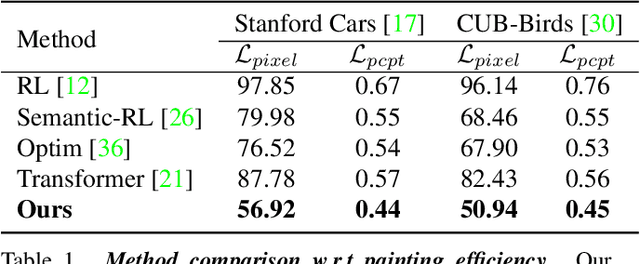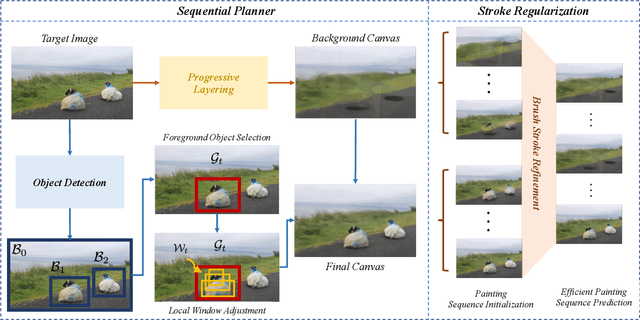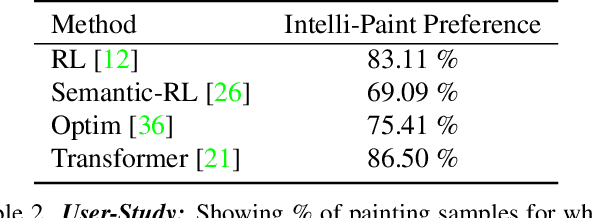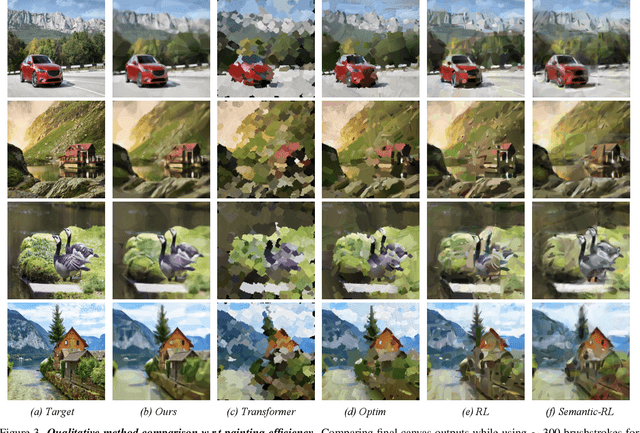Intelli-Paint: Towards Developing Human-like Painting Agents
Paper and Code
Dec 16, 2021



The generation of well-designed artwork is often quite time-consuming and assumes a high degree of proficiency on part of the human painter. In order to facilitate the human painting process, substantial research efforts have been made on teaching machines how to "paint like a human", and then using the trained agent as a painting assistant tool for human users. However, current research in this direction is often reliant on a progressive grid-based division strategy wherein the agent divides the overall image into successively finer grids, and then proceeds to paint each of them in parallel. This inevitably leads to artificial painting sequences which are not easily intelligible to human users. To address this, we propose a novel painting approach which learns to generate output canvases while exhibiting a more human-like painting style. The proposed painting pipeline Intelli-Paint consists of 1) a progressive layering strategy which allows the agent to first paint a natural background scene representation before adding in each of the foreground objects in a progressive fashion. 2) We also introduce a novel sequential brushstroke guidance strategy which helps the painting agent to shift its attention between different image regions in a semantic-aware manner. 3) Finally, we propose a brushstroke regularization strategy which allows for ~60-80% reduction in the total number of required brushstrokes without any perceivable differences in the quality of the generated canvases. Through both quantitative and qualitative results, we show that the resulting agents not only show enhanced efficiency in output canvas generation but also exhibit a more natural-looking painting style which would better assist human users express their ideas through digital artwork.
 Add to Chrome
Add to Chrome Add to Firefox
Add to Firefox Add to Edge
Add to Edge